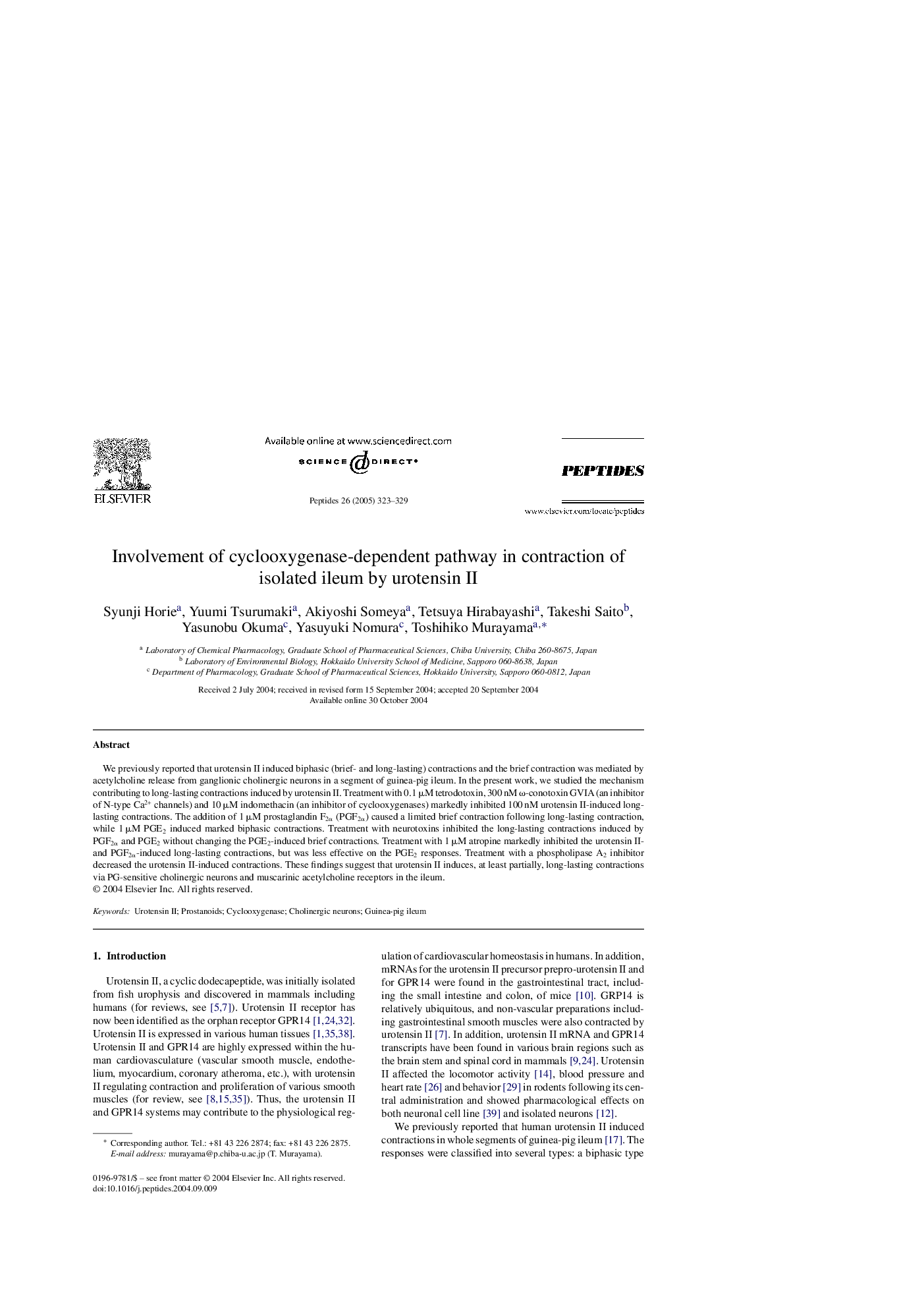| Article ID | Journal | Published Year | Pages | File Type |
|---|---|---|---|---|
| 10837016 | Peptides | 2005 | 7 Pages |
Abstract
We previously reported that urotensin II induced biphasic (brief- and long-lasting) contractions and the brief contraction was mediated by acetylcholine release from ganglionic cholinergic neurons in a segment of guinea-pig ileum. In the present work, we studied the mechanism contributing to long-lasting contractions induced by urotensin II. Treatment with 0.1 μM tetrodotoxin, 300 nM Ï-conotoxin GVIA (an inhibitor of N-type Ca2+ channels) and 10 μM indomethacin (an inhibitor of cyclooxygenases) markedly inhibited 100 nM urotensin II-induced long-lasting contractions. The addition of 1 μM prostaglandin F2α (PGF2α) caused a limited brief contraction following long-lasting contraction, while 1 μM PGE2 induced marked biphasic contractions. Treatment with neurotoxins inhibited the long-lasting contractions induced by PGF2α and PGE2 without changing the PGE2-induced brief contractions. Treatment with 1 μM atropine markedly inhibited the urotensin II- and PGF2α-induced long-lasting contractions, but was less effective on the PGE2 responses. Treatment with a phospholipase A2 inhibitor decreased the urotensin II-induced contractions. These findings suggest that urotensin II induces, at least partially, long-lasting contractions via PG-sensitive cholinergic neurons and muscarinic acetylcholine receptors in the ileum.
Related Topics
Life Sciences
Biochemistry, Genetics and Molecular Biology
Biochemistry
Authors
Syunji Horie, Yuumi Tsurumaki, Akiyoshi Someya, Tetsuya Hirabayashi, Takeshi Saito, Yasunobu Okuma, Yasuyuki Nomura, Toshihiko Murayama,
